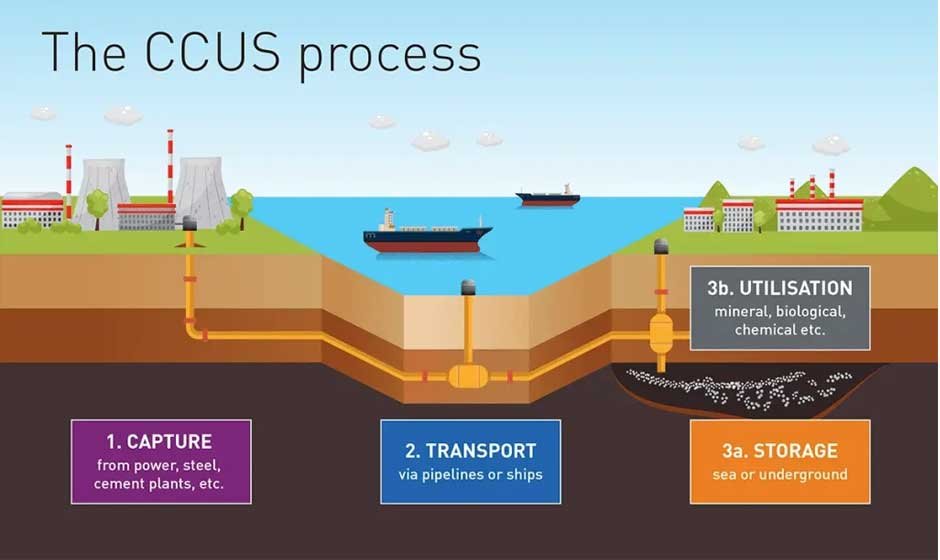As the world grapples with the pressing issue of climate change, industries are increasingly under pressure to adopt sustainable practices that minimize their environmental impact. One of the major contributors to global emissions is industrial activity, but thanks to innovative technologies and strategies, the reduction of industrial emissions is becoming a more achievable goal. This blog explores some of the cutting-edge solutions that are helping industries reduce their carbon footprints.
1. Carbon Capture and Storage (CCS)
Carbon Capture and Storage (CCS) has emerged as one of the most promising technologies for reducing industrial emissions. CCS involves capturing carbon dioxide (CO2) emissions at the source, such as from power plants or industrial processes, and then storing them underground to prevent their release into the atmosphere. This process can significantly reduce emissions from difficult to decarbonize sectors, such as cement, steel, and chemical manufacturing.
Recent advancements in CCS technology have made the process more efficient and cost-effective, allowing for broader implementation across industries. In some cases, captured CO2 is also being used for enhanced oil recovery or turned into useful products, such as synthetic fuels or chemicals, creating additional economic incentives for businesses to adopt this technology.
Innovative carbon capture companies are at the forefront of developing and deploying technologies that capture and store CO2 emissions, helping industries reduce their environmental impact and move towards more sustainable practices.
2. Renewable Energy Integration
The shift towards renewable energy is another key solution for reducing emissions in the industrial sector. Industries can significantly lower their carbon footprints by replacing fossil fuels with cleaner energy sources such as solar, wind, and geothermal. Many companies are integrating renewable energy into their operations to power machinery, heating systems, and other processes.
Innovative approaches, such as hybrid energy systems that combine renewables with energy storage, are helping industries maintain a reliable power supply while reducing their dependence on fossil fuels. Additionally, green hydrogen—produced from renewable electricity through water electrolysis—is being explored as a cleaner alternative to natural gas in high-temperature industrial processes.
3. Electrification of Industrial Processes
Electrification is another transformative approach to reducing industrial emissions. By replacing traditional fossil fuel-based heating and power systems with electric alternatives, industries can cut down on their carbon emissions. This is particularly relevant in sectors such as manufacturing, where energy-intensive processes like heating, melting, and drying are traditionally powered by coal, oil, or natural gas.
Technologies such as electric furnaces and heat pumps are enabling industries to switch to electric power, which can be sourced from renewable energy. This helps reduce emissions and improves energy efficiency, as electric systems tend to be more precise and easier to control than their fossil fuel counterparts.
4. Circular Economy and Waste Reduction
A circular economy, which focuses on reusing, recycling, and minimizing waste, is another powerful tool in the fight against industrial emissions. By adopting circular practices, industries can reduce the need for raw materials and energy, significantly reducing carbon emissions. For example, recycling materials such as metals, plastics, and textiles can drastically cut down on the energy required to produce new products, which is often a major source of emissions.
In addition, technologies that improve waste management, such as waste-to-energy systems and advanced recycling processes, are helping to divert waste from landfills and reduce methane emissions. As industries continue to invest in these solutions, they can achieve a more sustainable, low-carbon future.
5. Smart Manufacturing and Efficiency Improvements
The rise of smart manufacturing technologies, powered by the Internet of Things (IoT) and artificial intelligence (AI), is also helping industries reduce emissions. By using data analytics and real-time monitoring, companies can optimize their production processes to be more energy-efficient, minimize waste, and reduce emissions. For instance, AI algorithms can predict equipment maintenance needs, preventing unnecessary downtime and energy waste.
In addition, IoT-enabled sensors can track energy consumption and emissions across various stages of production, allowing companies to identify areas where improvements can be made. By implementing these technologies, industries can cut emissions while also improving their overall operational efficiency.
Conclusion
Innovative solutions are revolutionizing the way industries approach emissions reduction, from carbon capture to smart manufacturing. As these technologies continue to evolve and become more widespread, industries will play a vital role in combating climate change and building a more sustainable future. By adopting these advancements, businesses not only contribute to environmental protection but also unlock new economic opportunities and enhance their competitiveness in an increasingly eco-conscious market.






